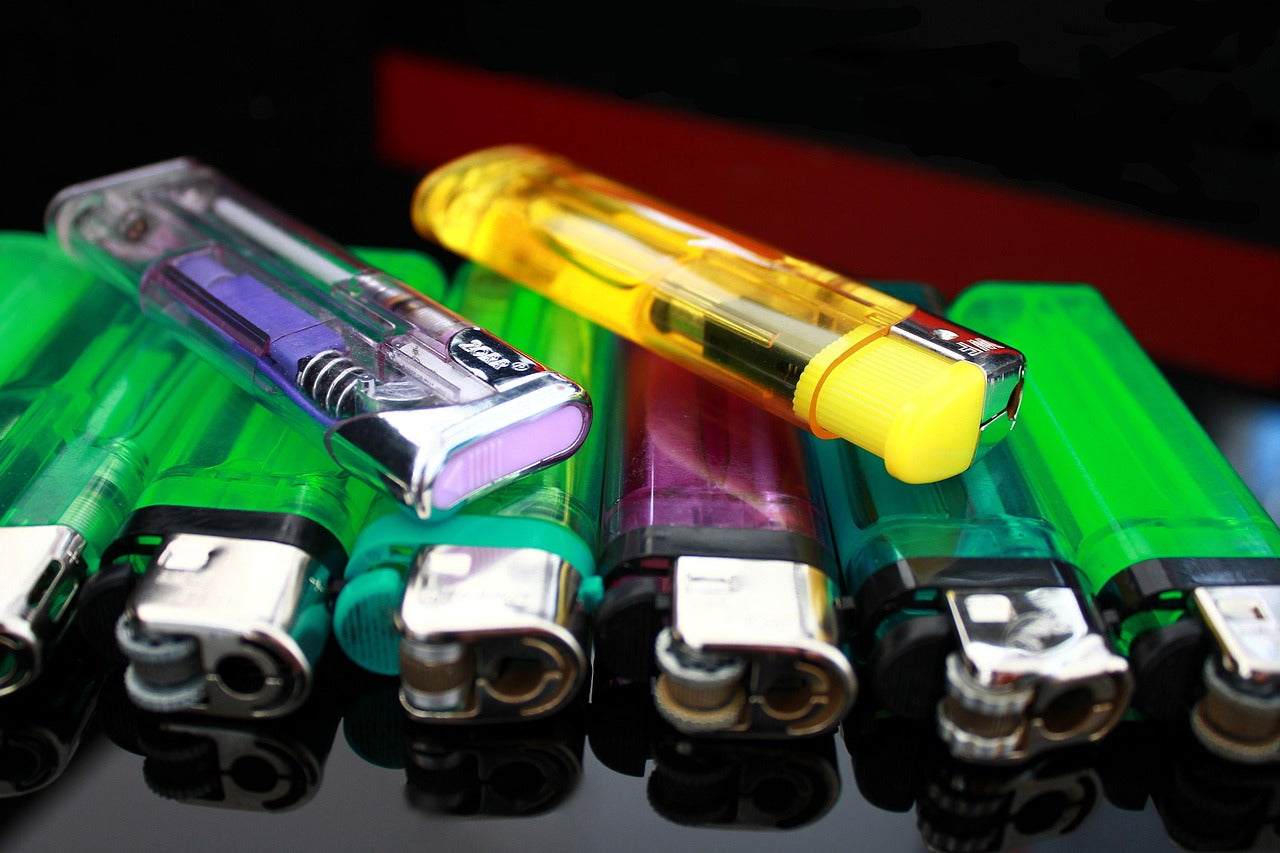Lighters have evolved beyond their functional purpose to become statement pieces, collectibles, and even canvases for artistic expression. A custom-painted lighter is not only a great way to showcase your creativity but also makes for an excellent personalized gift. Whether you're a DIY enthusiast or an aspiring artist, this guide will take you through the process of personalizing lighters with paint.
We’ll cover everything from preparation to painting techniques, sealing, and maintenance, ensuring that your custom lighter designs stand the test of time.
Why Personalize Your Lighter?
Customizing lighters with paint offers more than just aesthetic appeal it adds sentimental and artistic value. Here are a few compelling reasons to personalize your lighter:
-
Self-Expression – Your lighter can reflect your style, personality, or favorite themes.
-
Memorable Gifts – A hand-painted lighter makes for a thoughtful and unique gift.
-
Branding & Collections – Many artists and small businesses customize lighters as part of their product line or branding.
-
Event Keepsakes – Custom lighters can serve as commemorative pieces for weddings, birthdays, or other special occasions.
Best Occasions for Custom Lighters
-
Birthday Gifts – Add a personal touch with initials, quotes, or themed artwork.
-
Anniversaries & Celebrations – Mark special milestones with artistic designs.
-
Promotional Merchandise – Companies and brands often use custom lighters for marketing.
-
Hobby & Collectible Art – A customized lighter can be an addition to an artist’s portfolio or collection.
Necessary Materials and Tools
Before starting your DIY painted lighters, ensure you have the right tools and materials for the best results. Here’s a list of essentials:
Materials Needed
-
Lighters – Metal lighters (like Zippo) work best due to their durable surfaces.
-
Acrylic Paints – High-quality, multi-surface acrylics ensure better adhesion.
-
Paint Brushes – Fine-tip brushes for detailing and broader brushes for larger areas.
-
Sealants – Clear acrylic sealant protects the painted surface from wear.
-
Sandpaper (400-600 grit) – To smooth the lighter’s surface before painting.
-
Masking Tape – Covers areas you don’t want to paint.
-
Rubbing Alcohol & Lint-Free Cloths – For surface cleaning.
-
Palette – For mixing paints.
-
Protective Gloves – To prevent oils from transferring onto the lighter.
Choosing the Right Lighter
While any lighter can be customized, metal lighters like Zippo are the most preferred due to their smooth, durable surfaces and longevity.
-
Material – Metal surfaces hold paint better than plastic ones.
-
Finish – A matte or brushed metal surface is easier to paint than a glossy one.
-
Size & Shape – Opt for a flatter surface for ease of design application.
Preparing Your Lighter for Painting
Proper preparation is crucial for ensuring the paint adheres well and lasts long. Follow these steps:
Step-by-Step Preparation
-
Disassemble the Lighter – Remove the insert and flint wheel to prevent paint interference.
-
Clean the Surface – Wipe the lighter with rubbing alcohol to remove dirt and oil.
-
Sand the Surface – Use fine-grit sandpaper to create a slightly rough texture for better adhesion.
-
Apply Masking Tape – Cover areas that should remain unpainted, like the hinge or bottom stamp.
-
Apply a Primer (Optional) – A light primer coat can enhance adhesion, especially on glossy surfaces.
Design Ideas for Your Lighter
If you need inspiration, here are some creative ideas for your custom lighter designs:
Popular Themes
-
Abstract Art – Bright colors, splatter effects, or surreal patterns.
-
Pop Culture – Favorite movie characters, game icons, or band logos.
-
Nature & Scenery – Mountains, waves, trees, or floral elements.
-
Personalized Monograms – Initials, signatures, or meaningful symbols.
-
Tattoo-Inspired Designs – Classic tattoo motifs like skulls, roses, and tribal patterns.
Tips for Choosing a Design
-
Select a color scheme that complements your vision.
-
Use stencils for precise geometric or repeated patterns.
-
Consider contrasting colors to make elements stand out.
Painting Techniques for Custom Lighters
Mastering different painting techniques can elevate the final result of your DIY painted lighter. Here’s how:
1. Blending
For smooth transitions between colors, use the wet-on-wet technique, gently mixing paints on the surface before they dry.
2. Layering
Apply multiple thin coats instead of one thick layer to prevent chipping.
3. Stenciling
For intricate designs, cut a stencil from vinyl or masking tape and apply paint with a sponge or brush.
4. Detailing
Use fine-tip brushes or toothpicks for intricate designs, like small text or patterns.
Special Techniques: Hand-Painted Zippo
Zippo lighters are particularly popular for customization due to their durability and smooth surface.
Painting on Metal Surfaces
-
Use metal-specific acrylic paints for better adhesion.
-
Let each layer dry fully before adding details.
-
Apply a thin, even coat of sealant to prevent scratches.
Iconic Zippo Design Ideas
-
Engraved Look – Paint in fine lines to mimic engraving.
-
Vintage Aesthetic – Use muted tones for a classic look.
-
Minimalist Style – Simple geometric patterns or calligraphy.

Sealing and Protecting Your Artwork
A sealant is essential for preserving your custom-painted lighter. It protects against moisture, scratches, and fading.
Best Products for Sealing
-
Acrylic Spray Sealant – Dries clear and adds a protective layer.
-
Glossy or Matte Finishes – Choose based on your preferred final look.
Application Steps
-
Ensure the paint is completely dry before sealing.
-
Apply light, even coats instead of a heavy layer.
-
Let it cure for 24-48 hours before handling extensively.
Maintenance Tips for Painted Lighters
To keep your personalized lighter art in top condition, follow these tips:
-
Avoid excessive moisture exposure.
-
Store it in a pouch or case to prevent scratches.
-
Clean the surface with a soft, damp cloth (avoid harsh chemicals).
-
If the paint starts chipping, touch up with additional sealant.
(Source: @justwincustoms)
Creating a custom-painted lighter is a rewarding and enjoyable process, allowing you to express creativity and craft something truly unique. Whether you’re designing a one-of-a-kind gift or adding to a personal collection, a DIY painted lighter is a small yet impactful piece of art. To enhance your painting projects, explore high-quality acrylic paints, sealants, and brushes from Angelus Direct, known for their durability and vibrant results, ensuring your designs stand the test of time.
FAQs
1. What type of paint adheres best to lighter surfaces?
Acrylic paints designed for multi-surface applications, including metal, work best. Angelus Direct offers high-quality acrylic paints that provide vibrant colors and long-lasting adhesion, making them an excellent choice for custom lighter designs.
2. How long does the paint need to dry before using the lighter?
It’s best to let the paint dry for at least 24 hours before handling and sealing.
3. Can these techniques be used on any lighter brand?
Yes, but metal lighters provide the best results, as plastic may require additional priming.
4. How do I remove paint from a lighter if I make a mistake?
Use rubbing alcohol or acetone with a soft cloth to remove mistakes before sealing.
5. Are there any safety considerations when painting a lighter?
Avoid painting the interior or ignition area. Ensure proper drying before reassembly.

